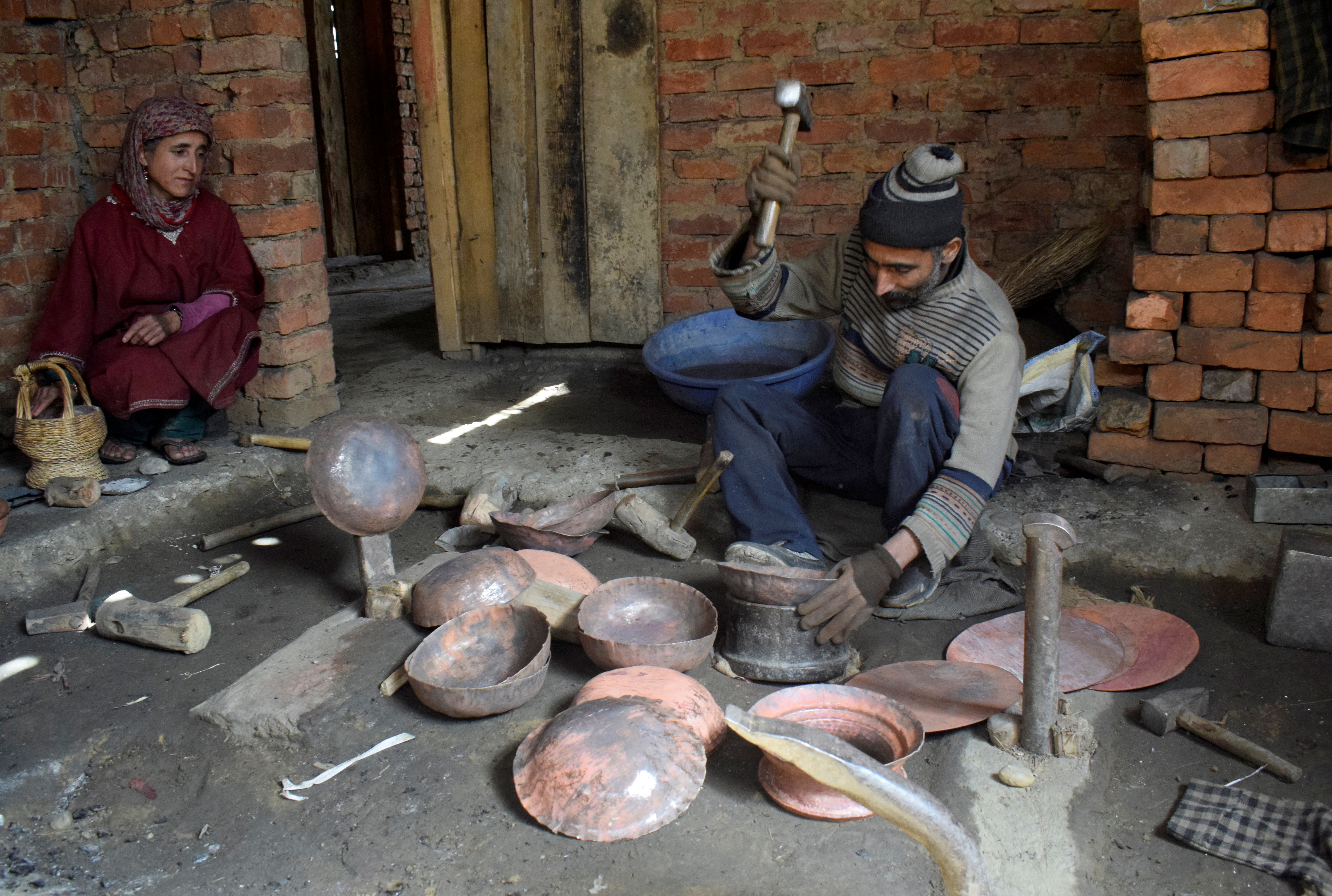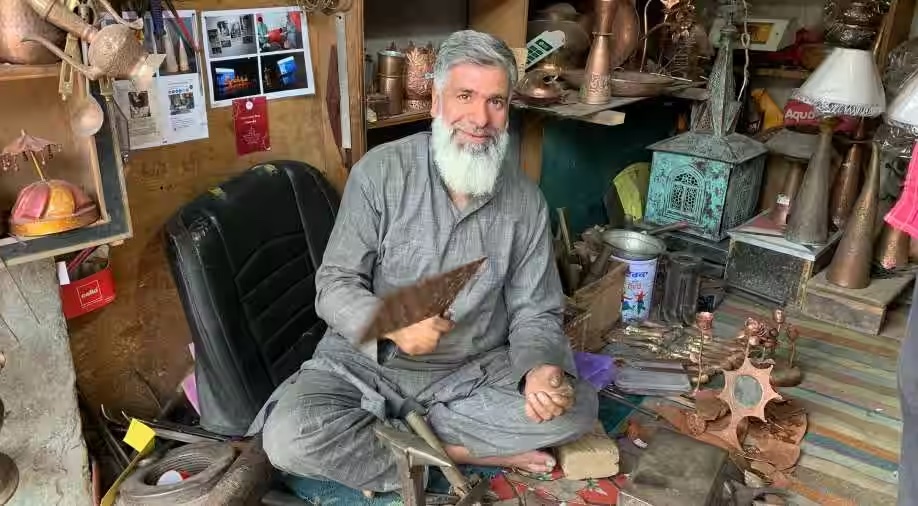In the picturesque valleys of Kashmir, an ancient craft teeters on the edge of extinction. The Kashmiri copperware industry, once vibrant and thriving, now faces the overwhelming dominance of machine-made products. However, amidst this gloom, one artisan stands tall, Mohammad Aslam Bhat, who has taken it upon himself to revive this fading art form. Through his innovative designs and unwavering commitment, Bhat aims to preserve the legacy of Kashmiri copperware for future generations.
Preserving Tradition through Innovation
Mohammad Aslam Bhat, a passionate and skilled copperware artisan, has embarked on a mission to rejuvenate the craft in the Kashmir Valley. Recognised for his exceptional ideas and dedication, he recently received an award from the state government, honouring his invaluable contributions. Bhat’s workshop, nestled in the historic district of Srinagar, serves as a hub of creativity where he tirelessly crafts unique copperware products that captivate both locals and tourists.

Fighting the Threat of Machine-Made Products
The encroachment of machine-made products has led to a decline in the number of artisans associated with the craft. Bhat, however, has introduced innovative ideas and designs that machines cannot replicate, offering a distinct and unmatched appeal. His resolve to save the craft is bolstered by the recognition he has received and the encouragement it has sparked among fellow artisans. Bhat calls upon his peers to embrace innovation, ensuring the art never fades away. Furthermore, he highlights the need for government support, urging a ban on machine-made products to level the playing field for artisans like himself.
Revitalising Demand through Unique Offerings
Traditionally, copperware was an integral part of every Kashmiri household, primarily in the form of traditional utensils. Bhat’s creativity has expanded the scope of the craft, introducing decorative pieces such as vases, lampshades, phone holders, and jewelry. Each product is meticulously hand-carved, reflecting the rich heritage of Kashmiri craftsmanship. Bhat’s creations not only attract buyers with their uniqueness but also keep the tradition alive by incorporating local motifs that identify them as truly Kashmiri. The demand for these distinctive handcrafted pieces has surged, providing hope for the survival of the craft.
Government Intervention for Long-Term Preservation
Recognising the urgency, the Kashmir’s copperware artisan’s association advocates for government intervention to safeguard the craft’s centuries-old legacy. They propose banning machine-made products to protect the authenticity and artistry of handcrafted copperware. Additionally, the association emphasises the importance of financial support and infrastructural development, suggesting the establishment of dedicated workshops, training centres, and design studios. Such measures would provide aspiring artisans with the necessary skills and resources to continue the craft.

Promoting Kashmiri Copperware Globally
To breathe new life into the industry, the government can collaborate with tourism agencies to promote Kashmiri copperware on a global scale. Showcasing the artistry of Kashmiri artisans through cultural exhibitions, trade fairs, and international events would attract visitors seeking unique, handmade products. This exposure would not only provide a platform for artisans like Bhat to display their talents but also expand their customer base beyond regional boundaries.
Preserving Cultural Heritage and Identity
Preserving Kashmiri copperware is not solely an economic concern. It holds the cultural heritage, traditions, and identity of the Kashmiri people. Each piece of handcrafted copperware tells a story, connecting the present to the rich tapestry of the region’s history. By nurturing this craft, the government instills a sense of pride and cultural identity among the local population, ensuring its continuity for future generations.
Conclusion
The tireless efforts of artisans like Mohammad Aslam Bhat exemplify the unwavering spirit and determination to revive the dying craft of Kashmiri copperware. Their innovative designs and commitment to preserving tradition serve as beacons of hope for the industry. However, the survival of this craft requires collective action.Bhat exemplify the unwavering spirit and determination to revive the dying craft of Kashmiri copperware. Their innovative designs and commitment to preserving tradition serve as an example of hope for the industry. However, the survival of this craft requires collective action.
Preserving Kashmiri copperware extends beyond economic benefits. It is a matter of safeguarding cultural heritage, traditions, and identity. Each handcrafted piece carries the essence of Kashmir’s rich history, evoking a sense of pride among the local population. By cherishing and nurturing this art form, we ensure that future generations will continue to appreciate and inherit this invaluable legacy.
Let us recognise the urgency of the situation and rally behind the artisans, supporting their efforts to save Kashmiri copperware. Together, we can breathe new life into this dying art form, ensuring that its beauty and cultural significance endure for generations to come.
To read about the Kashmir’s Papier Mache Art click Here
Feature Image Courtesy: wionnews

Contributor






